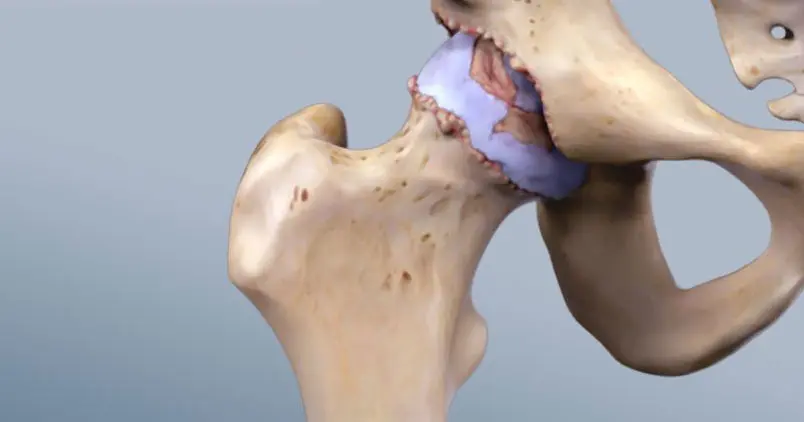Back and Joint Pain, Surgical Procedures and Protocols
Arthritis And Hip Arthroplasty
What Is Hip Arthritis?
Hip arthritis can be a painful condition limiting both movement and function of the hip and as a result hip arthritis can have a negative impact on an individuals mental and physical health. There is currently no “cure” for arthritis, conservative treatment such as physiotherapy is directed at maintaining an individuals function and relieving any symptoms. Hip arthroplasty is considered a last resort and is used in situations where severe arthritis is causing significant physical and mental impact. A few common types of arthritis that can affect the hip are osteoarthritis, rheumatoid arthritis, and traumatic arthritis:
- With osteoarthritis the protective cartilage that cushions the ends of your bones wears down this sort of arthritis occurs more commonly in the late middle age to elderly population. It is not a systemic arthritis and typically impacts a singular joint or just a few joints in the body. Meaning someone may have fairly advanced osteoarthritis of their left hip but their right hip is relatively OK…
- Rheumatoid arthritis is an autoimmune disease. It is an inflammatory arthritis where chronic inflammation can damage the cartilage, leading to pain, stiffness and reduced function. It is a systemic arthritis and as a result typically impacts multiple joints in the body and frequently has other effects on the body unlike osteoarthritis that exclusively impacts joint tissue.
- Post-traumatic arthritis is another type of arthritis that can impact the hip. A condition triggered by an acute joint trauma such as trauma associated with sports injury, motor vehicle accidents and falls…. Traumas that are either singular or more repeated trauma to a joint can lead to osteoarthritis or chronic inflammatory arthropathies. Ultimately leading to an individual developing both hip pain and stiffness over time.
Childhood Hip Conditions And Future Hip Arthroplasty Risk
Some childhood hip diseases can impact the hip ability to develop “normally” ultimately affecting joint surfaces and potentially contributing to a need for a hip arthroplasty later in life. Such diseases can include conditions like Perthes disease and developmental hip dysplasia.
- Perthes disease is where blood supply to the head of the femur (the ball of the hip joint) is temporarily disrupted and without adequate blood supply bone cells die, causing the bone to deteriorate.
- Developmental dysplasia of the hip is where the hip joint has not formed normally in babies and young children impacting future outcomes with the hip joint. It s is also sometimes called congenital dislocation of the hip, or hip dysplasia.
Hip Arthoplasty For Hip Arthritis
Pain and stiffness in the hip joint may impact the ability to do even simple daily tasks in life such as walking without pain and getting dressed in the morning. Hip arthroplasty is indicated when the cause of hip pain is from arthritis and functional limitation is high. With a hip arthroplasty the painful arthritic hip is replaced, generally a hip replacement is considered an effective operation and frequently relieves pain allowing a return to a high level of activity. When indicated a hip arthroplasty can improve function and relieve pain in all the above mentioned arthritic conditions of the hip and the longevity of the prosthesis nowadays should last around 25 years. This increase in prosthetic longevity is significant as if timed right any need for a revision surgery in most situations is not necessary (as morbidly the prosthetic outlives its host).
Disclaimer: Sydney Physio Clinic provides this information as an educational service and is not intended to serve as medical advice. Anyone seeking specific advice or assistance on Arthritis And Hip Arthroplasty should consult his or her general practitioner, physiotherapist, medical specialist, or otherwise appropriately skilled practitioner.


